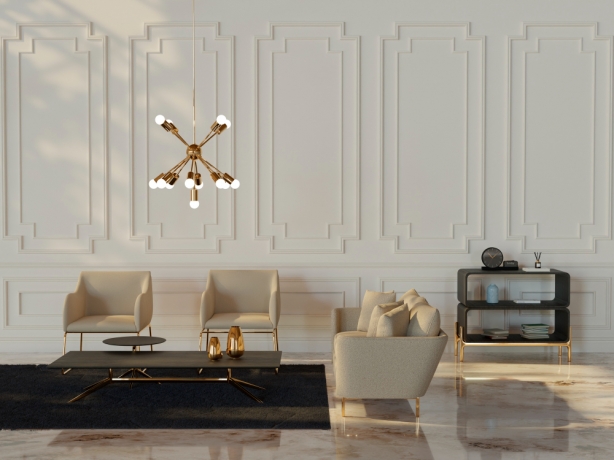The spaces we inhabit have a profound impact on our emotional well-being, productivity, and overall quality of life. While we often focus on external factors when seeking to improve our mental health – exercise routines, meditation practices, or social connections – we may overlook one of the most influential elements in our daily lives: our home environment. The emerging field of environmental psychology demonstrates that thoughtful interior design isn't just about aesthetics; it's about creating sanctuaries that actively support our psychological and emotional needs.
The Science Behind Space and Mood
Research consistently shows that our physical environment directly influences our mood, stress levels, and cognitive function. Natural light exposure regulates our circadian rhythms, affecting sleep quality and energy levels throughout the day. Color psychology reveals how different hues can either energize or calm our nervous system. Even the arrangement of furniture can impact our sense of security and social connection within our homes.
Studies from environmental psychology journals indicate that cluttered, poorly organized spaces contribute to elevated cortisol levels – the stress hormone that can lead to anxiety, depression, and compromised immune function. Conversely, well-designed environments with clear sight lines, natural elements, and purposeful organization promote feelings of calm and control.
The concept of "restorative environments" emphasizes spaces that help us recover from mental fatigue and emotional stress. These environments typically feature natural light, plants or nature views, comfortable seating arrangements, and personal meaningful objects that create emotional anchoring points throughout our homes.
Biophilic Design: Bringing Nature Indoors
One of the most powerful wellness design principles involves incorporating natural elements into our living spaces. Biophilic design recognizes our innate connection to nature and leverages this relationship to improve indoor environments. This approach goes beyond simply adding houseplants – though they certainly contribute to air purification and visual appeal.
Natural materials like wood, stone, and organic textiles create tactile experiences that ground us in the present moment. The grain patterns in hardwood floors, the texture of natural fiber rugs, and the warmth of wooden furniture pieces all contribute to sensory richness that artificial materials cannot replicate.
Water features, whether small desktop fountains or larger installations, introduce the calming sounds of moving water that can mask urban noise pollution and create meditative focal points. Natural color palettes inspired by earth tones, sky blues, and forest greens help maintain our connection to outdoor environments even when we're inside.
Large windows and skylights maximize natural light exposure, which is crucial for maintaining healthy vitamin D levels and supporting our body's natural rhythm. When architectural modifications aren't possible, strategic mirror placement can amplify existing natural light and create the illusion of larger, brighter spaces.
Color Psychology and Emotional Regulation
The colors we choose for our homes significantly impact our emotional state and behavior patterns. Understanding color psychology allows us to create spaces that actively support our wellness goals and lifestyle needs.
Warm colors like soft oranges, warm yellows, and gentle reds can create feelings of energy and social connection, making them ideal for gathering spaces like kitchens and living rooms. However, these stimulating colors should be used judiciously in bedrooms, where cooler, more calming tones promote restful sleep.
Cool colors such as blues, greens, and soft purples have been shown to lower blood pressure and heart rate, making them excellent choices for bedrooms, home offices, and meditation spaces. These colors create psychological distance and can make small spaces feel larger and more serene.
Neutral colors provide grounding and versatility while allowing personal accessories and artwork to take center stage. Whites, creams, and soft grays create clean, uncluttered backdrops that can be energizing in their simplicity while remaining timeless as personal tastes evolve.
Mindful Material Selection
The materials we choose for our homes impact not only our physical comfort but also our psychological well-being. Luxury furniture crafted from high-quality materials provides both durability and sensory satisfaction that contributes to our daily quality of life.
Natural materials like solid wood, natural stone, and organic textiles offer superior tactile experiences compared to synthetic alternatives. The weight, texture, and temperature of quality materials provide sensory feedback that artificial materials cannot replicate, creating more satisfying and grounding interactions with our environment.
Sustainable material choices align our living spaces with our values, reducing the cognitive dissonance that can occur when our home environment conflicts with our beliefs about environmental responsibility. This alignment between values and living space contributes to a sense of integrity and peace within our personal sanctuary.
Handcrafted elements, whether custom furniture pieces or artisanal accessories, introduce the human element into our spaces. These items carry the energy and intention of their makers, creating more meaningful connections between ourselves and our possessions.
Creating Functional Wellness Zones
Modern homes benefit from designated areas that support specific wellness activities and emotional needs. These zones don't require large spaces but do need thoughtful design consideration to maximize their effectiveness.
Reading nooks with comfortable seating, good lighting, and minimal distractions provide dedicated spaces for mental stimulation and relaxation. These areas should be positioned near natural light sources when possible and include storage for books, journals, or other contemplative materials.
Meditation or quiet reflection spaces benefit from minimal, calming design elements. Floor cushions, soft lighting, and perhaps a small altar or meaningful objects create dedicated areas for mindfulness practice and emotional centering.
Exercise areas, even if limited to yoga mat space, should be designed to feel separate from daily household activities. Mirrors can create the sense of larger space while allowing for proper form checking during movement practices.
The Psychology of Organization and Flow
The organization and flow of our living spaces significantly impact our mental state and daily functioning. Clutter creates visual noise that can overwhelm our cognitive processing, while well-organized spaces promote mental clarity and emotional calm.
Traffic flow patterns within homes should feel natural and unobstructed. Furniture arrangements that require awkward navigation create subtle stress, while open, logical pathways promote ease and comfort in daily movement through our spaces.
Storage solutions that keep daily necessities accessible but visually contained help maintain the balance between functionality and aesthetics. Hidden storage maintains clean sight lines while ensuring that practical items remain within easy reach.
Personal meaningful objects should be displayed thoughtfully rather than cluttered together. Each meaningful piece deserves space to be appreciated individually, creating multiple points of positive emotional connection throughout our homes.
Technology Integration and Digital Wellness
Modern wellness-centered design must address our relationship with technology and digital devices. While technology serves important functions in our daily lives, its integration into our homes should support rather than disrupt our wellness goals.
Charging stations in bedrooms should be positioned away from sleeping areas to reduce electromagnetic interference and the temptation to use devices before sleep. Dedicated technology zones can contain the visual clutter of cords, devices, and related accessories.
Smart home technology can support wellness goals through automated lighting that mimics natural circadian rhythms, air quality monitoring systems, and sound systems that can provide calming background music or nature sounds throughout the day.
Investment in Long-term Well-being
Creating wellness-centered living spaces represents an investment in long-term mental health and life satisfaction. Quality furnishings and thoughtful design elements provide daily benefits that compound over time, improving mood, reducing stress, and supporting overall life satisfaction.
The process of creating these spaces can itself be therapeutic, providing a sense of control and creative expression that contributes to emotional well-being. Each improvement to our living environment represents an act of self-care and investment in our future happiness.
When we view our homes as active contributors to our wellness rather than simply functional shelters, we begin to make different choices about the objects we bring into our spaces and the way we arrange them. This shift in perspective transforms our living environments into powerful tools for supporting our mental health and overall quality of life.






